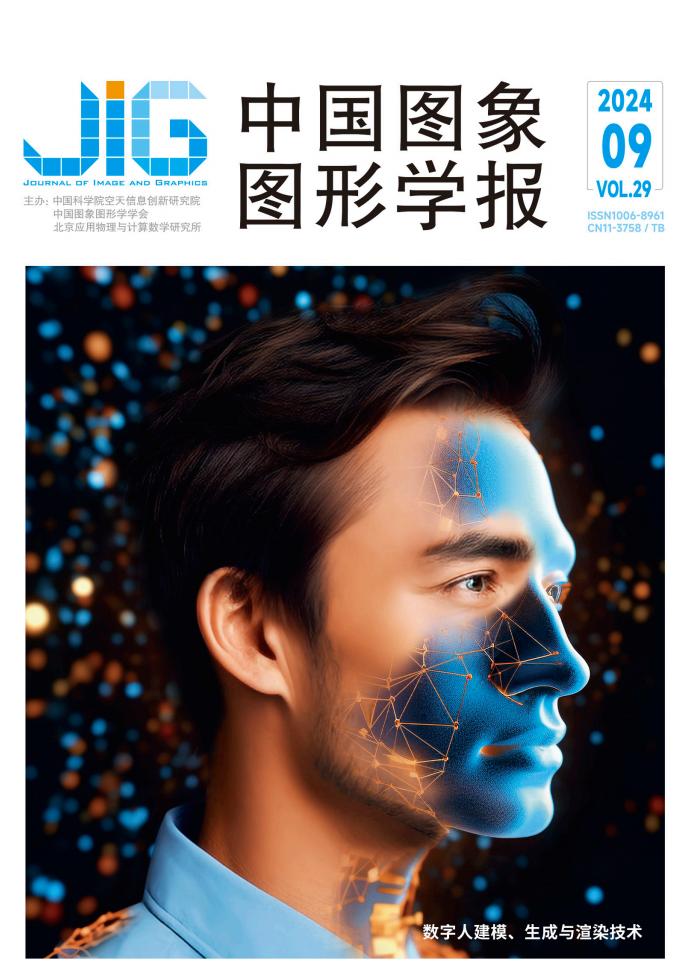An Intra- and Inter-Modality Fusion Model with Invariant- and Specific-Constraints Using MR Images for Prediction of Glioma Isocitrate Dehydrogenase Mutation Status
Q3 Computer Science
引用次数: 0
Abstract
In the 2021 World Health Organization classification of gliomas, it is proposed that Isocitrate Dehydrogenase (IDH) plays a key role. The prognosis of glioma is largely affected by IDH mutation status. Therefore, IDH mutation status needs to be predicted in advance before surgery. In the past decade, with the development of machine learning, more and more machine learning methods, especially deep learning methods, have been applied to the development of computer-aided diagnosis systems. At present, in this field, many deep learning and radiomics based methods have been proposed for IDH prediction using multimodal Magnetic Resonance Imaging (MRI). In this study, we proposed an intra- and inter-modality fusion model with invariant- and specific- constraints to improve the performance of IDH status prediction. First, MRI-based radiomics features were fused with deep learning features in each modality (intra-modality fusion) and then the features extracted from each modality of brain MRI were fused by using an inter-modality fusion model with invariant and specific constraints. We experimented our proposed method on the dataset provided by the Affiliated Hospital of Zhengzhou University in Zhengzhou, China and demonstrated the effectiveness of the proposed method. In our study, we propose two inter-modality fusion models, and our experimental results show that our best proposed method outperformed state-of-the-art methods with an accuracy of 0.79, precision of 0.80, recall of 0.75, and F1 score of 0.78. Thus, we predicted the IDH mutation status for glioma treatment with a 2% increase in accuracy and 4% increase in precision to predict the IDH mutation status for glioma treatment.使用磁共振图像预测胶质瘤异柠檬酸脱氢酶突变状态的具有无创和特异性限制的模内和模间融合模型
在2021年世界卫生组织的胶质瘤分类中,提出异柠檬酸脱氢酶(IDH)起着关键作用。胶质瘤的预后在很大程度上受IDH突变状态的影响。因此术前需提前预测IDH突变状态。近十年来,随着机器学习的发展,越来越多的机器学习方法,特别是深度学习方法被应用到计算机辅助诊断系统的开发中。目前,在这一领域,已经提出了许多基于深度学习和放射组学的方法来利用多模态磁共振成像(MRI)预测IDH。在这项研究中,我们提出了一种具有不变约束和特定约束的模态内和模态间融合模型,以提高IDH状态预测的性能。首先,将基于MRI的放射组学特征与各模态的深度学习特征进行融合(模态内融合),然后使用具有不变约束和特定约束的模态间融合模型对脑MRI各模态提取的特征进行融合。我们在中国郑州郑州大学附属医院提供的数据集上进行了实验,验证了所提出方法的有效性。在我们的研究中,我们提出了两种多模态融合模型,我们的实验结果表明,我们提出的最佳方法优于现有的方法,准确率为0.79,精密度为0.80,召回率为0.75,F1分数为0.78。因此,我们预测胶质瘤治疗中IDH突变状态的准确性提高了2%,预测胶质瘤治疗中IDH突变状态的精度提高了4%。
本文章由计算机程序翻译,如有差异,请以英文原文为准。
求助全文
约1分钟内获得全文
求助全文
来源期刊

中国图象图形学报
Computer Science-Computer Graphics and Computer-Aided Design
CiteScore
1.20
自引率
0.00%
发文量
6776
期刊介绍:
Journal of Image and Graphics (ISSN 1006-8961, CN 11-3758/TB, CODEN ZTTXFZ) is an authoritative academic journal supervised by the Chinese Academy of Sciences and co-sponsored by the Institute of Space and Astronautical Information Innovation of the Chinese Academy of Sciences (ISIAS), the Chinese Society of Image and Graphics (CSIG), and the Beijing Institute of Applied Physics and Computational Mathematics (BIAPM). The journal integrates high-tech theories, technical methods and industrialisation of applied research results in computer image graphics, and mainly publishes innovative and high-level scientific research papers on basic and applied research in image graphics science and its closely related fields. The form of papers includes reviews, technical reports, project progress, academic news, new technology reviews, new product introduction and industrialisation research. The content covers a wide range of fields such as image analysis and recognition, image understanding and computer vision, computer graphics, virtual reality and augmented reality, system simulation, animation, etc., and theme columns are opened according to the research hotspots and cutting-edge topics.
Journal of Image and Graphics reaches a wide range of readers, including scientific and technical personnel, enterprise supervisors, and postgraduates and college students of colleges and universities engaged in the fields of national defence, military, aviation, aerospace, communications, electronics, automotive, agriculture, meteorology, environmental protection, remote sensing, mapping, oil field, construction, transportation, finance, telecommunications, education, medical care, film and television, and art.
Journal of Image and Graphics is included in many important domestic and international scientific literature database systems, including EBSCO database in the United States, JST database in Japan, Scopus database in the Netherlands, China Science and Technology Thesis Statistics and Analysis (Annual Research Report), China Science Citation Database (CSCD), China Academic Journal Network Publishing Database (CAJD), and China Academic Journal Network Publishing Database (CAJD). China Science Citation Database (CSCD), China Academic Journals Network Publishing Database (CAJD), China Academic Journal Abstracts, Chinese Science Abstracts (Series A), China Electronic Science Abstracts, Chinese Core Journals Abstracts, Chinese Academic Journals on CD-ROM, and China Academic Journals Comprehensive Evaluation Database.
 求助内容:
求助内容: 应助结果提醒方式:
应助结果提醒方式:


